- Dasha
- Report Consultation
- NVRA Raja Meena 2 Junior
- :K GURU RAJESH
- Astrology Books
- Dr. Suresh Chandra Mishra
- UBSPD Publications
- J.N.Bhasin
- Marriage Astrology
- Birth Time Rectification
- Tilak Chand Tilak
- Muthireddy Prabhakar
- B Hariharan
- Jaimini Astrology
- Mundane Astrology
- Crystal
- Dr. Rudra Dev Tripathi
- Dr. K S Charak
- Iranganti Rangacharya
- BigNote Publications
- Consultation by Sunil John
- Vijaya Kumar
- Dr. K S. Charak
- Children And Astrology
- Panchang
- O.P.VERMA
- Vani Publications
- Medical Astrology
- Astrology Webinar
- Niroge Duniya
- ;Jay Yadav
- Bhrighu Astrology
- Vastu Consultation
- Shizuko Yamamoto
- Ramesh Vaish
- J K Sethi Rohit Sethi Chetan Sethi
- Authors
- Mridula Trivedi
- N E MUTHUSWAMY
- Brahamananda Tripathi
- V.P. GOEL
- Meenakshi Priyadarshini
- ASHISH GUJRAL
- Pradeep Bhushan Goel
- Pawan Ballabh Thapliyal
- Dharmadatt Vaidh
- Amadea Morningstar
- Heinrich Zimmer
- GOPAL SHARMA
- PT. TARACHANDRA
- RAM LAL SHAH
- C. H. Asrani
- HARISH JOHARI
- Shristi Sahoo
- Partha Sarathi Rout
- SHRI RADHARAMAN 'SUMAN
- ABHINAV MISHRA
- RAMESHWAR CHANDRA SHASTRI
- DR. CHANDRAMOHAN JHA
- Shivesh Prasad Mishra
- Vikash Sharma
- Z. Ansari
- V. S. KALYANRAMAN
- Satish K. Navathe
- Jagannath Bhasin
- JATINDER PAL SINGH SANDHU
- LAXMI KANT VASHISTH
- Dr. Uday Kant Misra
- Acharya Bhawna Bhatiya
- GAYATRI DEVI VASUDEV
- Shalila Sharamon
- Gopal Das Neeraj
- John E. Coleman
- RAMESHWAR BHATTA
- Vijaya Kumar
- Bukkyo Dendo Kyonkai
- SHRI RAMCHANDR
- Rakesh Soni
- Tilak Chand Tilak
- DR. NEERAJ PANDEY 'DADA'
- Deepak Bisaria
- Dr. Challa Somasundaram
- Howard Beckman
- Lalitha V
- Kunwarlal Jain
- N. CHIDAMBARAMIYER
- KUSUM VASHIST
- Hemant Kumar Sharma
- Dr. Revathi Vee Kumar
- Deepak Bhardwaj
- M.K. AGARWAL
- DR. SHANKER ADAWAL
- VASANT LAD
- Vivekshri Kaushik Vishvamitra
- MOHAN BHAI D. PATEL
- Dr. N.H.Sahasrabuddhe
- BANSI PANDIT
- Bryson
- Sawan
- Idea Baba
- Pandit Pannalal Jyotishi
- Siddhayogi Sivadasan Ravi
- PT. LASHANLAL JHA
- K.P. KRISHMAN’S
- Thich Nhat Hanh
- Dr. Rajbeer Singh
- Shri Ram Gopal Goswami ji
- T.P Trivedi
- Dr E S Neelakantan
- Shri Vindheshwari Prasad Dwivedi
- Joni Patry
- Ashwini Baqaya
- Naval Singh
- ASHOK BHATIA
- S.S Dahiya
- Samprasad Vinod
- ATREYA
- Joseph Campbell
- SEVARAM JAIPURIA
- SHRI KASHIRAM
- BINOD KUMAR JOSHI
- Ramesh Vash
- B.K.S. Iyenger
- S. Prakash
- Shri Bhagavatananda Guru
- MANDAN SUTRADHAR
- Durga Prasad Shukl
- GIRIJASHANKAR SHASTRI
- Dr. Amar Aggarwal
- Dr Amar Agarwal
- G.V. Prabhakara Murthyc
- U.K JHA
- DR. N. RAMAMURTHY
- E. S. B. R. MISHRA
- LR Chawdhri
- M. H. K. Shastri
- Baby Krishna
- RUDRADEVI TRIPATHI
- David Frawley
- JAMES T. GLOVER
- Rajbali Pandey
- E Rameshwar Prasad
- JWALA PRASAD MISHRA
- Paramahansa Yogananda
- M. ANJANEYULU
- BIJOYLAXMI HOTA
- P. MAHIDHAR SHARMA
- K Hariharan
- Rajendar Menen
- MAHARSHI YATINDRA
- PROF. MRIDULA TRIPATHI
- Tirpur S. Gopalkrishnan
- Onkar Lal Sharma `pramad`
- Pandit Shri Kamlakant Thakur
- Madhav Janardan Ratate
- Alan Leo
- Sita Ram Singh
- Shrimdhukanta Jha
- Rajbir Singh
- Hemant Thakorbhai Bhatt
- Indrodeep Banerjee
- P. L. KHUSHU
- RAMA KRISHNA GOYAL
- Sunil V. Joshi
- PT. KRISHAN ASHANT
- Kaulacharya Jagdishanand Tirth
- anhavi N. Sahasrabuddhe
- Hart De Fouw
- R. D. MAHATME
- RAMESH CHANDRA SHRIVASTAVA
- C. M. Srivastava
- Mohan Kumar Kashyap
- Sri M.P. Shanmugam
- Mahrishi Bhrigu
- Sudhir Kove
- SHRIKRISHNA 'JUGNU
- p khurran
- Dr M.H.K. Shastri
- Pt. Ramjilal Gaur
- Girish Chandra Joshi
- Dr. A. V. Mohandas
- Neelam Gupta
- Ramesh Kumar
- H.K Thite
- K.C Vats
- PT. MUKUNDVALLABH MISHRA
- E.d. Perrone
- AMRITA PRITAM
- Nishantketu
- ISHWARI PRASAD PANDEY
- GEETA JOSHI
- Guneeta Dhingra
- APARNAA N RAJE
- U Suman Lathaa Metha
- MATRI PRASAD PANDEY
- DA Negandhi
- S S Gola
- KSR Prasad
- DR. NARESH JHA
- Dr. Brijbihari Nigam
- K N RAO
- B. Hariharan
- DR. V.P. SHUKLA
- PT. LASANALAL JHA
- Bepin Behari
- Pramod Kothari
- SURYA NARYANA VYAS
- ANURAG MATHUR
- Vasudeo Govind Apte
- R. Verma
- J. Sithamparanathan
- PT. BASTIRAMJI
- Vaidya Suresh Chaturvedi
- Dr S.R Jindal
- DINA NATH
- A.R.Hari
- VAIDYA MOOLCHAND BHARDWAJ
- Padmanabha Sharma
- Rekhaa Kale
- R.N. Vyas
- Prabodhchandra Madhukar
- Chandrashekhar Mishra
- Pandit Shivprasad Sharma
- O.P. Verma
- M G Kastwar
- Shailja Pandey
- Deepak Kapoor
- SAMPATH KUMAR MEDAVARAPU
- ER. P.L. KHUSHU
- Charubel
- K.S. RAMAKRISHNA AIYAR
- PARMANAND SHARMA
- Light Miller
- R. K. Madhukar
- Mahesh Dutt Sharma
- PT. SHRI RAVIDATTA
- Peter Newton
- Amit Abraham
- NAVNEET KAUSHIK
- Paul Bruntan
- Pramod Sagar
- SHANKAR BHAROSA JHA
- Pdt. Gyankunsh Kaushik Ji
- Dr. Nimai Banerjee
- Shri Vishnu K Acharya
- H.A. Padmini
- Vivekshri Kaushik Vishavamitra
- Sharad C. Joshi
- Birendra Nautiyal
- A V Mohandas
- Kanta Gupta
- C.A. SUBRAMANIA AIYAR
- S K DUGGAL
- Dr. Hanif Khan Shastri
- ADAMUIR
- Vishnu Dass
- Dennis M. Harness
- B.D. Sharma
- PT. SHALAGRAM JYOTISH
- SRI BHARATI KRSNA TIRTHAJI MAHARAJA
- Rajiv Sachdev
- Upendra Dhakre
- Himanshu Shangari
- JAYANTA BHAUMIK
- DR. DURGADUTT MISHRA
- Prem Dixit
- MAHAYOGI PILOT BABA
- Dr. Gauri Shankar Kapoor
- Pandit_sri_achyutananda_jha
- Dr.K.GURU RAJESH
- DR. SATISH CHANDAR AGARWAL
- K. GURU RAJESH
- Diwakar Shastri
- Shalini Dhasmana
- Dr. Sou. Achala Bhimsenkulkarni
- Mohan Srinivasan
- WILLIAM GEORGE BENHAM
- Bruno Dagens
- C. E. Lindgren
- Grehlakshmi
- Niketan Anand Gaur
- Pt. Ram Swarup Shastri
- SOUMYA KUMAR
- Umesh Pandey
- SHRI SHYAMSUNDAR
- K. SUBRAMANIAM
- ACHARYA VIJAY ANAND 'LOHAT'
- Lokmani Dahal
- Anantha Sharma
- Atul Sehgal
- Om Swami
- Shri Datta Raj
- N. Singh Dahiya
- Manik Chand Jain
- PT. GANGA PRASAD
- C.J. Krishnaswami
- Amanish Kumar
- MAHAN VIR TULLI
- Shiv Raj Sharma
- Rachna Bhola
- SHAILENDRA SHARMA
- Bryan Miller
- HARISH CHANDRA GAUTAM
- B.B. Paliwal
- JAYANT BURDE
- Dr. Brij Bhushan Goyal
- R. KRISHNA
- Suresh Shrimali
- kaali Pandit
- Shiraz
- SHRI YUTARAMA SHARMA
- Devdatt Patt
- Govind Shashtri
- Gavin
- K.K Pathak
- VS Kalyanraman
- S B R mishr
- DINESH S. MATHUR
- QAISER HUSSAIN
- Pt. Venimadhav Goswami
- JUDE C. WILLIAMS
- Shantree Kacera
- Dr.Styapal Duggal
- Frank Arjava Petter
- SHRI RAMSWARUP
- Vandana Singhal
- A B Shukla
- DIMPLE
- A.P. VELAYUDHAN
- Surendra Kumar Patawari
- Raj Kumar Aggarwal
- Dr. K N Saraswathy
- Hemant Bhatt
- SHRI KIRIT 'BHAI JI
- Dr. Gaurishankar Kapoor
- A Mahadeva Sastri
- V.P. Jain
- K. NARAYANASWAMI AIYER
- DR. SATYENDRA MISHRA
- Dr. Ravi Rao's
- Dr. Sou. Achala Kulkarni
- Anita Mathur
- TULSI RAM SWAMI
- David Pond
- Vinay Singhal
- SWAMI VENKATESANANDA
- SHRI VANSHIDHARA
- Ashwini Kumar
- Naresh Singal
- Vagaram Parihar
- BALDEV PRASAD MISHRA
- K S Krishnamurti
- S.S. CHATTERJEE
- DR. RAMESHWAR PRASAD SHARMA
- SHRI KAMAL KANT SHUKLA
- MADHUSUDAN SHARMA
- Ed. Heron Allen Henry Frith
- Sachchida Nand Mishra
- Piyush jen
- V. S. Sastri
- Akhila Kumar
- JAGDISH RAJ RATRA
- DR. BHOJRAJ DWIVEDI
- BRIJBHUSHAN LAL
- Meta B. Doherty
- P.V.R. RAYUDU
- Mahesh Sharma
- AYODHYA PRASAD SHARMANA
- Hiroshi Motoyama
- RAJEEV JHANJI
- DR. RAJEEV SHARMA
- VAYUNANDAN MISHRA
- Paramhansa Yogananda
- Pt Gopal Dev Gaur Shastri
- Yvonne Frost
- Acharya Bhaskaranand Lohani
- Dr. M N Muley
- Girija Shankar Shastri
- Neera Sawhney Chopra
- Shri Kapileshwar Shastriana
- R. SANTHANAM
- Maya Gupta
- Irangati Rangacharya
- UMA SHANKAR PALIWAL
- Devkinandan Singh
- Joyce Bueker
- USHA SAXENA
- Bhagwan Dev
- SHYAMLAL
- RONNIE GALE DREYER
- Richard Tunis
- RAKKHI SAMEER
- Madhivanan
- Neela R Gopal
- B. ARDHANAREESWARAN
- Thilak K.Baskaran
- Kanakkumar B. Bosmia
- SHASHIKANT OAK
- S.D. Udhrayan
- Suhas Dongre
- S.K. Kapoor
- RAMAMURTHY N
- Surakant Jha
- Prakhar Prajnanand Saraswati
- D. P. SAXENA
- M.K VISHWANATH NAYAR
- S.K. Anil
- Ridhhi Kapoor
- SAGE SATYACHARYA
- Jhampa Shaneman
- Rachel Fell Mcdermott
- B.R. Kishore
- VIRENDRA NATH SHARAMA
- SHRI MEGHARAJ
- N. H. Sahasrabudhe
- Bharat Singal
- PT. SUKHANAND MISHRA
- Dr. S.C. Kursija
- ACHARYA BHAGWAN SWAROOP VYAS
- DR. D.D. PANSE
- JAYDEEP YADAV
- Wally Krause
- Sun TZU
- Mithalal Himatram Ojha
- Rameshwar Sharma
- Kaushik Majumder
- KARAN K. MAHAJAN
- Dr. Nemani Venkata Raghunatha Rao
- Jitendra Trivedi
- DR. K V PRATAP KUMAR
- Asha Wollmann
- MAHENDER SINGH RANA
- SHARDENDU
- Gopesh kumar Ojha
- Maya Tiwari
- Stephen H. Wolinsky
- Upadhayay Rajni Kant
- Pt. Narayan Prasad Mishra
- Madame La Roux
- Gautami N Sahasrabuddhe
- R.K. Baqaya
- Saket Shah
- Sunita Upadhyay
- BADRI NARAYAN TRIPATHI
- MADAN MOHAN JOSHI
- R.P. Birthare
- Narayan Dutt Shrimali
- Srinivasa Sharma
- (JAGJIVANDAS GUPT)
- Marc Edmund Jones
- DR MANOJ KUMAR
- B. SURYANARAIN RAO
- Raj Kumar
- SOHANLAL VAYAS
- Suresh Chandra Mishra
- S.G. KHOT
- S.S SAREEN
- MUKUNDA DAIVAJNA
- L.C. Sharma
- Brajbiharilal Sharma
- Arthur Lytle
- Richard A. jelusich
- Shri Rajani Kant Shastri
- Rama Jyoti Vernon
- Kuldeep Jiwani
- Sonica Krishnan
- SUDHAKAR PUROHIT
- Priti Wonder
- S. Narayan Datt Shree Mali
- Joan McEevers
- PT. RAMESH DWIVEDI
- Tanya Malhotra
- kirtidutta jha
- Dr. Indra Dev Tripathi
- S. Ganesh
- M N Muley
- Shivakant Jha
- SHATRUGHAN TRIPATHI
- Prabodh Purohit
- R.G RAO
- K.T. SHUBHAKARAN
- jyotis shirmani
- AMJAD ALI
- Mukund Daivagya
- Kedardutt Joshi
- M. RAMAKRISHNA BHAT
- Manish Verma
- JAIDEVA SINGH
- SHRI CHATURTHI LAL SHARMANA
- J. P. Vaswani
- T S VASAN
- Shri Hanuman Sharma
- Ravinder Nath Prasad Singh
- YOGESH MALHOTRA
- Somnath
- Michael George Reccia
- Pt. Kanhaiya Lal Mishr
- Sadhguru
- T. GANPATI SHASTRI
- (Pt. Srimatra Prasad Pandey
- Dr. Sushil Agarwal
- MAINA BHATNAGAR
- Anuradha Sharda
- R.K. Das
- DINESHCHANDRA NEGANDHI
- Zuisei Yokoyama
- Prash Trivedi
- Dr. E. Saravanan
- Hardev Sharma Trivedi
- Tarashankar Vaidh
- Arastu Prabhakar
- PT. LAXMI NARAYAN
- Franz Benedikter
- Taoshobuddha
- Pinky Kapoor
- Acharya Ashutosh Bhardwaj
- ANIL G
- SHIVDUTT MISHRA SHASTRI
- Nemichandra Shastri
- Vedic Scripture
- RAGHVENDRA SHARMA
- Vraj Vallabh Dwivedi
- Vighnesh Radhakrishna
- Sri Nisargadatta Maharaj
- Vinod Kumar
- V SUBRAHMANYA SASTRI
- S P Khullar
- Shukdev Chaturvedi
- K.K. JOSHI
- OM PRAKASH PALIWAL
- V. RAJSUSHILA
- Roop Chand Joshi
- Jaidev Vidyalankar
- LATA JAGTIANI
- Radhakrishan Shrimali
- Rajinder Singh
- SHRI SHAMBHU SINGH
- Yaschpaule
- Devdutt Pattanaik
- SUDARSHAN SINGH 'CHAKRA
- Pramendra Srivastava
- BALWYN & JONES
- PT. Rajesh Dixit
- Shri Manishankar Ashutosh Ji
- Rajesh Tiwari
- Shakti Mohan Singh
- Dr. U.S Pulippani
- Maharishi Abhaya Katyayan
- Sri A. V. Sundaram
- GOURI SHANKAR KAPOOR
- N. SRINIVASAN SHASTRY
- V.K.Choudhry
- S. GOPALAKRISHNAN
- GANGA PRASHAD SHASTRI
- STEPHEN ARROYO
- DR. B.B. SAHI
- Kailash Nath Seth
- Dora Van Gelder Kunz
- CHATURTHI LAL PRAKASH
- SRI KRISHNA DAS
- Pradeep Kumar
- GBS SASTRY
- RAVI DATT SHASTRI RAJ VAIDH
- Rajesh Sharma
- ASHUTOSH BAJPAI
- Rajendernath Mishra
- V.K Shridhar
- TMJKASHIRAM
- PROF. KAUSHLENDRA PANDEY
- Ramtej Pandey
- Dr. Shankar Dutt Pandey
- C B Narnauli
- Vinayak Bhatt
- Satyamma Bharadwaj
- SHANKER ADAWAL
- Shil Ponde
- Anuj Guliani
- N.S. Dahiya
- B. V. RAMAN
- VAIDY SUBHASH CHANDRA
- Dr. Radheyshyam Mishr 'Paramhans
- Acharya Satyanand
- Pt. Mahidhar
- SVAMI PURNA
- Swami Vidyanand
- Prashant Kapoor
- JAY YADAV
- VIKRAM DIVAKAR
- Sitaram Jha
- NVR Raja
- Challa Soma Sundaram
- PT. SHAKTIMOHAN SHRIMALI
- S.A. Jedi
- Punit Sharma
- Dr. Kiran Manocha
- B. Hymavathi
- Vishnu Bhaskar
- N.P. SUBRAMONIA IYER
- Mahamahopadhyaya Iranganti Ranga Charya
- Dr.Kulanand Jha
- K. ASHU RAO
- MANINDER SINGH BATRA
- Ranjan
- Acharaya Mithilesh Gupta
- M. M. Gore
- Babu Lal Thakur
- V.K Sharma
- Robert E. Svoboda
- SHRI SHUKDEV
- P.J.SAHER
- S.N KAPOOR
- P. Khurrana
- DR. SURESH KUMAR SHARMA
- Chanakya Maharishi
- U.C.Mahajan
- Kernel Ashok Kumar Gaur
- Daya Shanker
- Kali Pandit
- Hemant Titirmare
- Subas Rai
- Prof.K.M.PALANIAPPAN
- Govindo Sri RamaMurti Rao
- SIR JOHN WOODROFFE
- Satyendra Mishra
- SHRI ABHAY KATYAYAN
- Shivraj Acharya
- P.S SHASTRI
- GIRISH CHAND SHARMA
- Krishan Rajesh Chaudhary
- N. KALIMUTHU
- TRILOKI NATH
- A.H.W. Sameer
- Christopher S. Hyatt
- Hugh B. Urban
- Jess E. Dines
- AMIT KASHYAP
- J.N. Sharma
- A R Raichur
- SURESH TANWAR
- U.N. Patnaik
- Vinay Kumar Pandey
- RAJ KISHOR VISHAVAKARMA)
- SHRI RAM SHASTRI
- R. C. Dadhwal
- Dr. Shrikant Tiwari
- Ramchandra Pandey
- Krishna Kumar
- Sunita Jha
- Harishankar Pathak
- Shri R.K. Das
- Vidhan Pandya
- RAJESH C. DADWAL
- GRACE INGLIS
- SHIV KUMAR CHADHA
- Jay Madan
- PT. KASHINATH SHASTRI
- N. C. PANDA
- DYANAND VERMA
- RAMAL SHASTRI
- PT. RUDRAMANI
- Vaidya Aasiya Rizvi
- N. ANANTHA RAMAN
- DR. BHUWAN MOHAN
- SOUNDAR DIVAKAR
- DYASHANKAR UPADHYAYA
- Talma Brill
- Dr. Neeraj lalwani
- VISHNU SHARMA
- Dr. R.K. Sharma
- N C Jain
- Ramesh Tanbe
- Satya Shree
- R. Asthana
- P.M. GOPALACHARY
- Achyutanand Jha
- Satyanarayana Naik
- Balmukund Pandey
- G.S. AGGARWAL
- R.S Chillar
- K.B. GOPALAKRISHNAN
- Cheiro
- CHANDRA DUTT PANT
- Bharati Krishna Tirthaji Maharaja
- B.K. Chaturvedi
- Judith Hipskind
- SHRI NANDARAM PANDIT
- Savitri Ramaiah
- Vikaas Budhwaar
- C. P. Arora
- Sarajit Poddar
- Ravi R Naik
- TOM MONTE
- Pravin S. R. Bhatia
- Seema Verma
- PK Vasudev
- Dr. ramragna Sharma
- Dr. R.P. Upadhyay
- Umang Taneja
- A.K Gour
- K. NARAYANAN
- ACHARYA GURU PRASAD GAUD
- Alok Jagawat
- Varahamihira
- SANJAY RATH
- Neerja Taneja
- JAGAT GURU AAGH SHANKARACHARYA
- Lyn Birkbeck
- Susan G. Shumsky
- Kuldeep Saluja
- S. Jason Black
- PT. VISHNU DATTA
- Rajeev Sachdev
- V Raghuraman
- Sunil John
- S Balasundaram
- LAKE RAJ DWIVEDI
- Amarchand Kaushik
- Acharya Vivek Kaishik
- Swami Chinmayananda
- VASTIRAM
- Eknath Easwaran
- Ajay Kumar Uttam
- Shri Sarvadev
- Pt. Kisanlal Sharma
- Satyadev Sharma
- Nakkirar S.Natarajan
- Dr. Jagannath Rao
- Dr.Shanker Adawal
- Ravindra Kumar
- Murlidhar Chaturvedi
- Anneke Huyser
- NISHA GHAI
- PT. REWASHANKAR
- B.B. PURI
- Nilesh Baxi
- A. KARTHIK
- DR. DEEPAK SINGLA
- SETHUMADHAVAN VENKATRAO
- RAJNARAYAN SHASTRI
- Acharya Ashok Sahjanand
- Vasudev Sadashiv
- Umesh Prasad Mishra
- Rraghavendra Saatvik
- V.P.Jain
- M.S. Mehta
- DR. R. NATARAJAN
- CS Patel
- RAMYATAN OJHA
- Harishchandra Vidyalankar
- CHANDER BHALLA
- BENI MADHAV GOSWAMI
- Priya Singh
- Dr Abhimantra
- ASHUTOSH OJHA
- Bodo J. Baginski
- Dayanand Verma
- Dietmar Kraemer
- RAGHUNANDAN SHARMA
- GYOMAYO NAKAMURA
- Satish Sharma
- PREM KUMAR SHARMA
- Khemraj Shri krishnadas
- Santosh Sharma
- HANS DECOZ
- DR. SHYAM PARASHAR
- Manoj Pathak
- Ramkishor Sharma
- Grant Lewi
- SNEH LATA
- Pt. Siyaram Shastri
- Madhavacharya
- R. SELVAM
- Yogesh Kumar Bansal
- Kamalkant Panday
- Chandrashekher Sharma
- Sage Gargacharya
- SUMEET CHUGH
- N. N. Saha
- Andree Leclerc
- NIMMI ARORA
- USHA LAD
- KAULACHARYA JAGDISH SHARMA
- K. Jaya Sekhar
- Neeraj Gupta
- Prem Bhatia
- P.K. SARNA
- Dr. Radhakrishna Shrimali
- Dinesh Vyas
- SANJEEV GADHOK
- NAVIKANTA JHA
- Swami Mukundananda
- Sadhvi Vrinda Om
- DR. NARWADESHAWAR TIWARI
- S. N. Khandelwal
- Dr. K S Charak
- Palmistry
- Pooja Paath
- Other Useful Books
- Surya Kanti Tripathi
- Career and Astrology
- Astrology
- authentic rudrakshas
- Vagaram Parihar
- Sarajit Poddar
- Yogas In Astrology
- Lal Kitab Consultation
- Hari OM Gupta
- Shilalekh Publishers
- Timing Of Events
- Remedies
- Meditation and yoga
- Rupa Publications
- Thilak Astro Books
- Holy and Divine Products
- L C Sharma
- Notion Press
- Online Consultation via Zoom
- UBSPD Publishers
- Faculties
- Devdutt Pattanaik
- P.V.R Narasimha Rao
- Naresh Singal
- Astrology Classics
- A. R. Hari
- Nagpur Prakashan
- Chakravarthi V. Narasimhan
- Sterling Publishers
- BigNote Publications
- Birth Time Rectification Books
- Publications
- Kalahasti Publication
- Ranjan Publication
- M.N. Kedar
- Krishman & CO
- Astro Research Centre
- Kanak Bosmia
- Deepak Kapoor Publication
- D.P.B. Publication
- Nirogi Duniya
- Krishnamurti Publications
- Sagar Publication
- Kadalangudi Publication
- S.S Gola Publishers
- Rave Publication
- KHEMRAJ PUBLICATION
- Master Kheladi Lal Publication
- Chaukhambha Sanskrit Bhawan
- Thilak Astro Books
- Vani Publication
- Jaico Publication
- Alpha Publication
- Rupa Publication
- Notion Press
- Esha Publication
- Megh Publication
- Pustak Mahal
- S. KRISHNA KUMAR
- Aggarwal Publication
- Big Note Publication
- Diamond Publication
- Deep Publication
- Nairs Publishers
- Saptarishis Publications
- RG Rao Publication
- NISHKAAM PEETH
- ICAS
- Bharatiya Vidya Prakashan
- VL Media Solution
- Nishkam Peeth
- UBSPD Publication
- Umang Taneja Publication
- MLBD Publications
- NVR RAJA PUBLICATIONS
- K. Jaya Sekhar
- Gyan Publication
- Manoj Publication
- CBH Publication
- PRANAV PUBLICATIONS
- Kojo Press
- Shila Lekh Publication
- Sterling Publication
- Pooja Publication
- Mix Publication
- Uma Publications
- Astrology Consultation
- Spiritual Events
- Author: Ramesh Menon
- H N Katwe
- Tarot Card
- Vaidya Suresh Chaturvedi
- Financial Astrology
- Suresh chand Mishra
- Ayurveda
- Vedic Maths
- Paulo Coelho
- Rupa Publication Pvt. Ltd.
- pandit rupchand Joshi krit
- K Guru Rajesh
- Gems and Astrology
- RL Vishnu
- B.V RAMAN
- Transit
- Swami Mukundananda
- Pandit K. B. Parsai & Pandit D. K. Parsai
- Ashtakvarga
- Vedic Jyotish
- Dr. NVRA Raja Meena 2 Junior
- Harsh Vardhan Wig
- CS Rao
- DR. G.S. KAPOOR
- Svara Vijnana
- Astrology Courses
- Horary Astrology
- Sagar Publications
- sunil john &team
- Vedic Astrology
- Nadi Astrology
- KP Astrology
- Lal Kitab Astrology
- Vastu
- Numerology
- Uncategorized
No products in the cart.
Return To ShopThe Curious Hats of Magical Maths: Vedic Mathematics for Schools part- 2 [MLBD]
₹395.00
Book Name: The Curious Hats of Magical Maths
AUTHOR: JAMES T. GLOVER
PUBLISHER: MOTILAL BANARSIDASS PUBLISHERS PVT. LTD.
LANGUAGE: ENGLISH
EDITION: 2013
PAGES: 696
COVER: PAPERBACK
OTHER DETAILS 21.5 CM X 14 CM
WEIGHT 820 GM
ORIGIN: INDIA
ISBN: 9788120816701
You may also like it
The Curious Hats of Magical Maths: Vedic Mathematics for Schools part- 2
Vedic mathematics for Schools, Book 2 is intended as a first year textbook for senior schools or for children aiming for examination at 11+. It is based on the fundamental principles of Vedic mathematics which were reconstructed earlier this century by Sri Sankaracarya Bharati Krsna Tirthaji. Although the sutras may well be very ancient, Practice and experience have shown that they are highly relevant and useful to the modern-day teaching of mathematics. They are entirely applicable to modern problems and even to Modern approaches to mathematics.
Topics covered includes the four rules of number, fractions and decimals, simplifying and solving in algebra, perimeters and areas, ratio and proportion, percentages, averages, graphs, angles and basic geometrical constructions. The book contains step-by-step worked examples with explanatory notes together with over two hundred together exercises.
The material in this book is currently used at schools around the world associated with the Education Renaissance Trust.
It is assumed that pupils using this book already have a degree of mathematical ability. In particular, the time tables need to be fully established. It should also be stated that regular practice of mental arithmetic is an essential accompaniment to this course.
Each method used for numerical calculations is introduced separately and exercises are carefully graded to enable the distinct developmental steps to be mastered. Each technique is denoted by one more of the sutras. The text incorporates explanations and worked examples of all the methods used and includes descriptions of how to set out written work.<.p> The structure of the book is such that at the end term a bright pupil should be able to complete about eight chapters. There are three revision chapters, the last of which contains practice papers. It is not necessarily intended that teachers rigidly adhere to the order of chapters as presented. Nevertheless, there are certain topics that the should be covered before moving on to more advanced work.
The course has been written in conjunction with teaching a group of ten and eleven year-olds. The main emphasis at this stage is on developing numeracy and its principal fields of application, since this is the most essential aspect of mathematics. The text concentrates on these areas of mathematics and treats them as the core curriculam of the subject.
Experience has shown that children benefit most from their own practice and experience rather than being continually provided with explanations of mathematical concepts. The explanation given in this text show the pupil how to proactive so that they may develop their own understanding.
It is to be hoped that teachers may provide their own practical ways of demonstrating this system or of enabling children to practice and experience the various methods and concepts and concepts, of course, where teachers are unfamiliar with the system themselves they would also have to practise. It is difficult to appreciate the full benefits of Vedic mathematics unless one gets immersed in the techniques, leaving behind all previous personal paradigms and prejudices about mathematic.
| Weight | 0.8 kg |
|---|
Only logged in customers who have purchased this product may leave a review.
Feature Products
Karmic Astrology with Prashna Paddhati: Practical Tools for Predictions
Star & Currency – The Vedic Astrology Guide To Forex Trading
Nakshatra Course with Pending Karma Consultation
Marriage Sutras & Nadi Navamsa In Astrology
Past Life Astrology & Nakshatras
Secrets of Varga in Vedic Astrology (Predicting Through Divisional Charts)
Sunil John’s Bhrighu Prashna Astrology – Identify Timing of Events (Natal and Prashna)
₹225.00
![The Chakra - Handbook: From basic understanding to practical application [MLBD] 1 Chakra](https://saptarishisshop.com/wp-content/uploads/2023/12/The-Chakra-100x100.jpg)

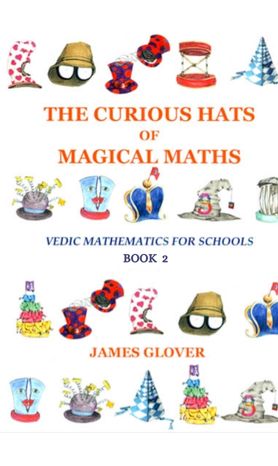

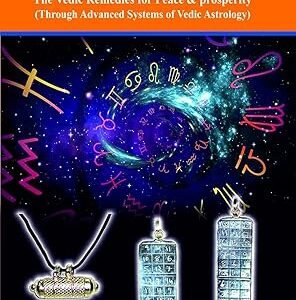


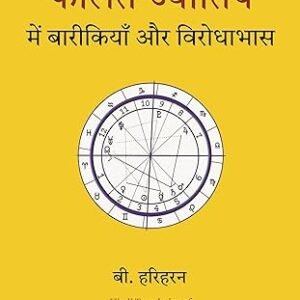
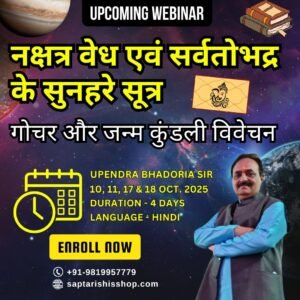
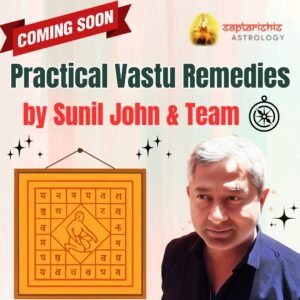
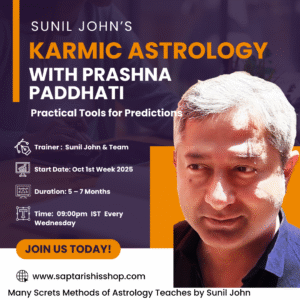
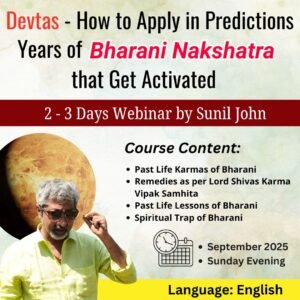


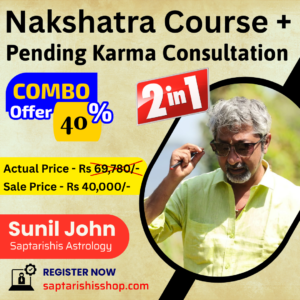
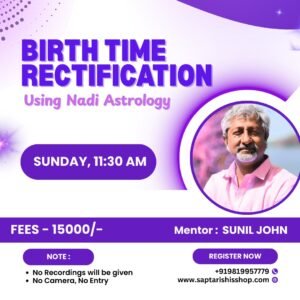
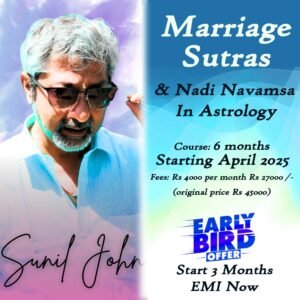
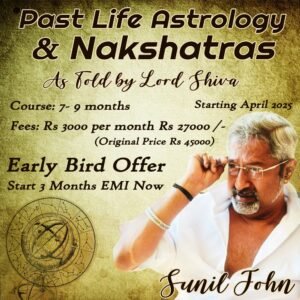
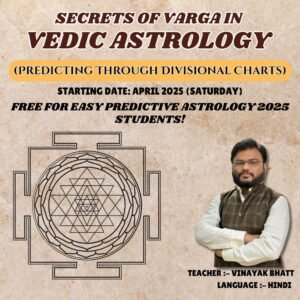
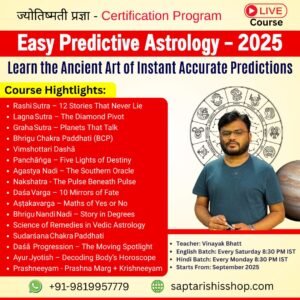
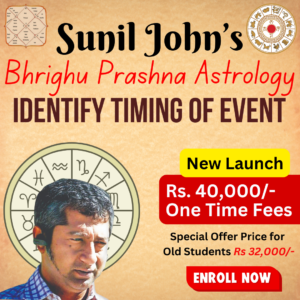
![The Concise Sanskrit-English Dictionary [MLBD] 2 Concise Sanskrit-English Dictionary](https://saptarishisshop.com/wp-content/uploads/2023/12/The-Concise--100x100.jpg)
Reviews
There are no reviews yet.